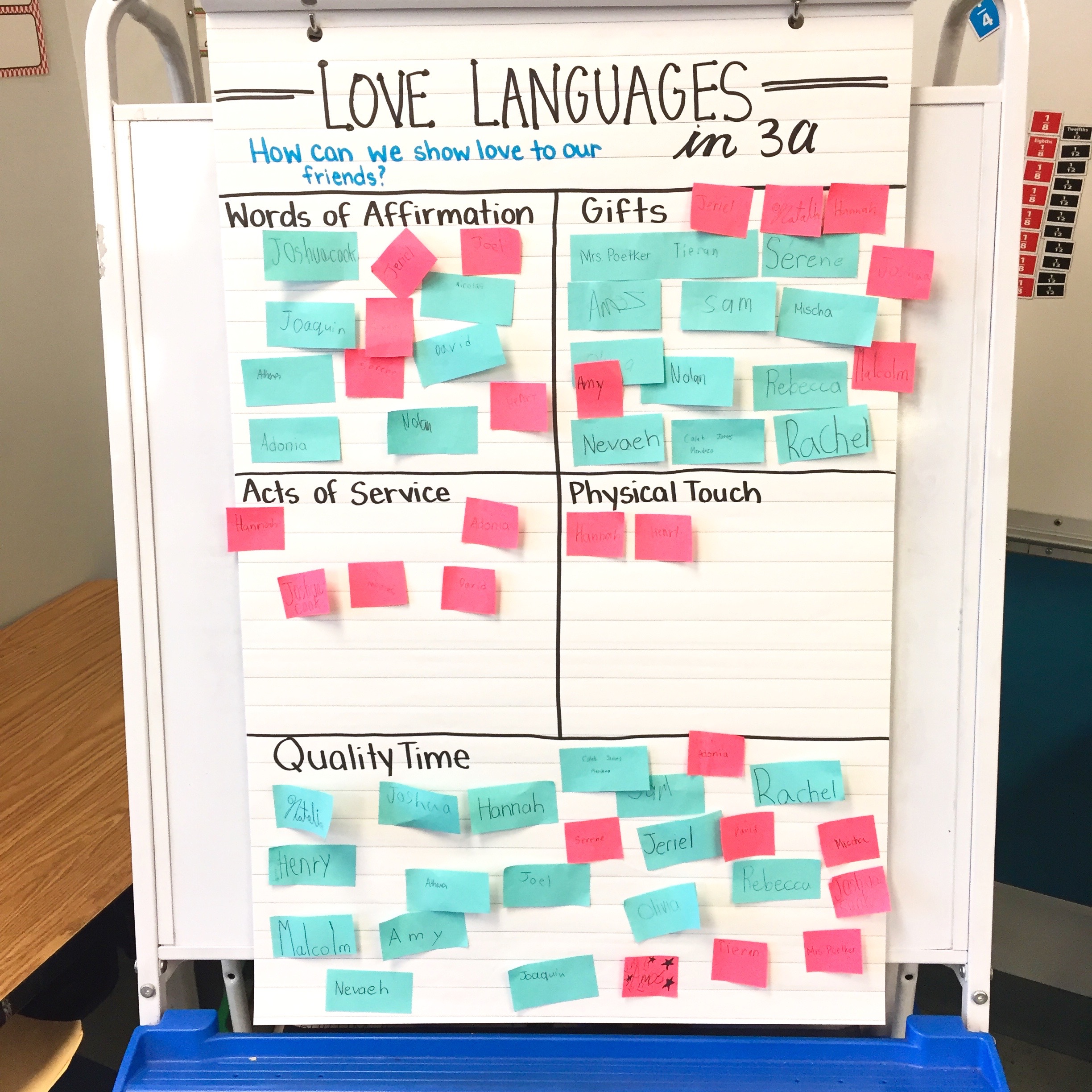Love Languages in the Classroom
Have you ever heard of Love Languages? I use them all of the time in my marriage and I try to show care and kindness to my friends in ways that speak to their love languages as well. But have you ever thought about using them in the classroom to help your students interact with each other and show care in a more meaningful way?
If you have never heard of love languages, the basic premise is that there are five basic ways that we all receive and give love: gifts, quality time, acts of service, physical touch, and words of affirmation. Through the love languages quiz, you can find out the primary and secondary way that you like to receive love.
I wanted to try this out in my classroom because I had a group of kids who both loved to give physical touch and did not like to receive it. It was a really weird contrast. They were a very ‘touchy’ group without any sense that no one else wanted to be hugged/touched in return. I thought that exploring Love Languages might give them other tools to show their care and concern in a way that could be better received.
So we did the quiz individually, as a teacher-led activity. You can find a paper-based version of the quiz in the book “5 Love Languages of Children” or, if you have access to computers or tablets, there is a free version of the quiz available online from the official Love Languages book website. Using the paper-based version, I walked my students through each question and we tallied up their primary and secondary love languages. Each student was given a post-it note and they charted their top two Love Languages.
It was so interesting to see how my students like to receive love – it was definitely different than I would have expected.
Then we met on the carpet to talk about it. Of course, we all loved parts of all of the Love Languages, but after talking, most agreed that these were their favorite ways to receive love. Together, we brainstormed ways that we could show love to our friends that would match up with their Love Languages.
Play a board game with someone who is quality time
Give a high-five to someone who is physical touch
Write a note to someone who is words of affirmation
Tidy a friend’s cubby if they are acts of service
Make a craft for someone who is gifts
It was so fun to brainstorm ways to show love to our friends in a way that they like to receive it. We hung up our Love Languages chart in a clear spot in the classroom for the next couple of months so that the students could easily see it. As a teacher, I enjoyed watching my kids head back to that chart frequently to find a name on it to see a way they could ‘bless’ someone else. It really helped to build character and empathy in my students and encouraged them to put the needs of their peers far above their own needs.
Have you ever used Love Languages in your classroom? I’m already starting to plan ways to go ‘bigger’ with this in the future. I’d love to hear your ideas in the comments below!



